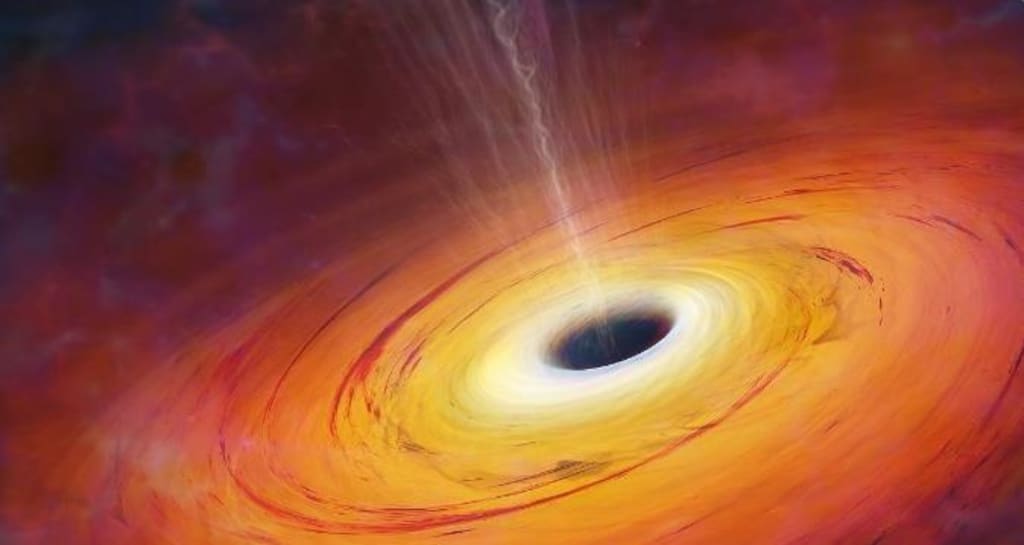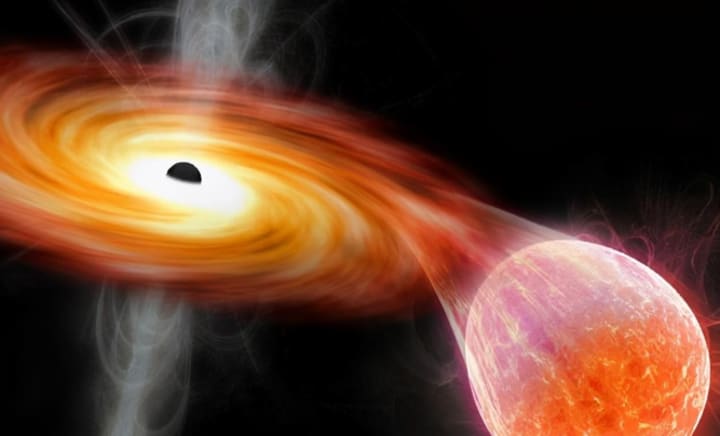
A black hole is a mysterious object that exists in cosmic space. Its gravitational force is so strong that light cannot escape. That is why black holes cannot be directly observed by us.
Black Holes
More than 100 years ago, in 1916, the German astronomer Karl Schwarz, who was serving at the front, predicted the existence of a black hole by calculation. It was only on April 10, 2019, that the first human sheet of a black hole was released. Undoubtedly black holes are a very mysterious kind of celestial body.
A black hole is not a hole as we understand it. Like other celestial bodies such as the Sun and the Earth, black holes are objects with mass and even electric charge. Most of the black holes that scientists have discovered so far have very large masses. Black holes like the one at the center of galaxy M87, the first black hole photo of mankind, have a mass about 6.5 billion times that of the Sun. This is an astronomical number that we can hardly imagine. Similarly, there is a supermassive black hole at the center of the Milky Way galaxy. Its mass is about 3.7 million times that of the Sun.
Black Holes
Are all black holes very massive? Not exactly. There are also black holes with smaller masses in the universe. Astronomers from Ohio, USA have discovered the smallest black hole on record. This black hole is located in the constellation Unicorn, hence the name "Unicorn".
The black hole Unicorn has a mass about three times that of the Sun. Compared to the supermassive black holes at the center of galaxies mentioned earlier, the mass of the Unicorn is very small. This black hole is about 1500 light-years away from Earth. It is also the closest to Earth of any black hole discovered so far.
Black hole unicorn
So how big is this "unicorn", a black hole with three times the mass of the Sun? Scientists believe that a black hole is an object of infinite density and infinite size. Therefore, we cannot describe the real size of a black hole. But black holes have an interface called the "horizon". The horizon is not the black hole itself.
The apparent horizon of a black hole
Within the "horizon", light cannot escape from the strong gravitational force of the black hole. Therefore, inside the horizon is the territory of the black hole, and we cannot observe what it is like inside. But the places that happen to be at the edge of the horizon and outside the world are what we can observe. Therefore, the radius from the horizon to the black hole itself can be used as a reference to describe the size of the black hole. This radius is called the Swansea radius.
Swastika Radius
The Swansea radius is named after the German astronomer Carl Swansea, who predicted the black hole. Its formula is this. We can use it to calculate the Swansea radius of a unicorn black hole. The result of the calculation is that its Swansea radius is 8847 meters. This value is very similar to the altitude of Mount Everest!
This number looks big, but it is actually very small. Don't forget that this is the size of the apparent radius formed by a black hole with 3 times the mass of the Sun!

Black hole
How did astronomers discover such a small black hole, 1500 light years away from Earth? It's thanks to its companion star. Scientists have discovered a red giant star that seems to be pulled by an invisible hand. The star's brightness, shape, speed, and orbit were all affected. So astronomers have used these clues to discover the black hole around the red giant.
The black hole and the star around it
Some of you are confused when you see that the black hole is only 3 times the mass of the Sun. What if three solar masses merge to create a black hole? This idea is not correct. Why? Let's find out.
How do black holes come about? Scientists believe that black holes generally evolve from dead massive stars. When a massive star runs out of fusion reaction material inside it, its life ends. At this point, the radiation pressure of the star from the fusion reaction decreases as the fusion reaction stops and cannot compete with the star's gravity. This causes the star's material to collapse rapidly toward the center of the star. All of the matter slams into the center of the star in a single stream. This causes the star to explode violently. We call this explosion of the star a supernova explosion.
Supernova explosions
The supernova explosion throws most of the material of the star out into the universe, but there is still some material left in the core of the star. This material was squeezed to a great extent in the stellar explosion. So much so that the atomic nuclei of the matter are side by side, with a density of 100 million tons per cubic centime or more. This is a neutron star. A neutron star with a radius of 10 kilometers has a mass equivalent to that of the Sun.
Neutron stars
But there are also massive stars that do not die as neutron stars. They reach what is called the "Oppenheimer-Knockoff limit" when the mass remaining after the supernova explosion reaches a value of more than 3-4 times the mass of the Sun, and a terrible scene occurs.
In the interior of the stellar remnant, the simple merger pressure between neutrons can also prevent its gravity from continuing to collapse. The stellar remnant material continues to be compressed until the neutrons are also crushed by gravity and contract further. The dead stellar remnant will continue to be compressed until it becomes a black hole of infinite density and infinite volume.
Black Holes
Thus, a black hole with 3 times the mass of the Sun can only be described as a star with a mass of more than 3 times the mass of the Sun remaining after a supernova explosion. A star of 3 solar masses alone cannot form a black hole. The initial mass of the star that formed the black hole "unicorn" was at least 12 times more than that of the Sun. It is only when it explodes that a black hole of this size is created.
About the Creator
Monu Ella
And I know it's long gone and there was nothing else I could do






Comments
There are no comments for this story
Be the first to respond and start the conversation.